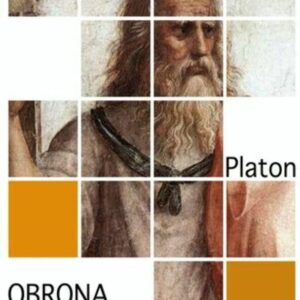Description
Dont waste time bending Python to fit patterns youve learned in other languages. Pythons simplicity lets you become productive quickly, but often this means you arent using everything the language has to offer. With the updated edition of this hands-on guide, youll learn how to write effective, modern Python 3 code by leveraging its best ideas.Discover and apply idiomatic Python 3 features beyond your past experience. Author Luciano Ramalho guides you through Pythons core language features and libraries and teaches you how to make your code shorter, faster, and more readable.Complete with major updates throughout, this new edition features five parts that work as five short books within the book:Data structures: Sequences, dicts, sets, Unicode, and data classesFunctions as objects: First-class functions, related design patterns, and type hints in function declarationsObject-oriented idioms: Composition, inheritance, mixins, interfaces, operator overloading, protocols, and more static typesControl flow: Context managers, generators, coroutines, async/await, and thread/process poolsMetaprogramming: Properties, attribute descriptors, class decorators, and new class metaprogramming hooks that replace or simplify metaclasses Spis treści:PrefaceWho This Book Is ForWho This Book Is Not ForFive Books in OneHow the Book Is OrganizedHands-On ApproachSoapbox: My Personal PerspectiveCompanion Website: fluentpython.comConventions Used in This BookUsing Code ExamplesOReilly Online LearningHow to Contact UsAcknowledgmentsAcknowledgments for the First EditionI. Data Structures1. The Python Data ModelWhats New in This ChapterA Pythonic Card DeckHow Special Methods Are UsedEmulating Numeric TypesString RepresentationBoolean Value of a Custom TypeCollection APIOverview of Special MethodsWhy len Is Not a MethodChapter SummaryFurther Reading2. An Array of SequencesWhats New in This ChapterOverview of Built-In SequencesList Comprehensions and Generator ExpressionsList Comprehensions and ReadabilityListcomps Versus map and filterCartesian ProductsGenerator ExpressionsTuples Are Not Just Immutable ListsTuples as RecordsTuples as Immutable ListsComparing Tuple and List MethodsUnpacking Sequences and IterablesUsing * to Grab Excess ItemsUnpacking with * in Function Calls and Sequence LiteralsNested UnpackingPattern Matching with SequencesPattern Matching Sequences in an InterpreterAlternative patterns for lambdaShortcut syntax for function definitionSlicingWhy Slices and Ranges Exclude the Last ItemSlice ObjectsMultidimensional Slicing and EllipsisAssigning to SlicesUsing + and * with SequencesBuilding Lists of ListsAugmented Assignment with SequencesA += Assignment Puzzlerlist.sort Versus the sorted Built-InWhen a List Is Not the AnswerArraysMemory ViewsNumPyDeques and Other QueuesChapter SummaryFurther Reading3. Dictionaries and SetsWhats New in This ChapterModern dict Syntaxdict ComprehensionsUnpacking MappingsMerging Mappings with |Pattern Matching with MappingsStandard API of Mapping TypesWhat Is HashableOverview of Common Mapping MethodsInserting or Updating Mutable ValuesAutomatic Handling of Missing Keysdefaultdict: Another Take on Missing KeysThe __missing__ MethodInconsistent Usage of __missing__ in the Standard LibraryVariations of dictcollections.OrderedDictcollections.ChainMapcollections.Countershelve.ShelfSubclassing UserDict Instead of dictImmutable MappingsDictionary ViewsPractical Consequences of How dict WorksSet TheorySet LiteralsSet ComprehensionsPractical Consequences of How Sets WorkSet OperationsSet Operations on dict ViewsChapter SummaryFurther Reading4. Unicode Text Versus BytesWhats New in This ChapterCharacter IssuesByte EssentialsBasic Encoders/DecodersUnderstanding Encode/Decode ProblemsCoping with UnicodeEncodeErrorCoping with UnicodeDecodeErrorSyntaxError When Loading Modules with Unexpected EncodingHow to Discover the Encoding of a Byte SequenceBOM: A Useful GremlinHandling Text FilesBeware of Encoding DefaultsNormalizing Unicode for Reliable ComparisonsCase FoldingUtility Functions for Normalized Text MatchingExtreme Normalization: Taking Out DiacriticsSorting Unicode TextSorting with the Unicode Collation AlgorithmThe Unicode DatabaseFinding Characters by NameNumeric Meaning of CharactersDual-Mode str and bytes APIsstr Versus bytes in Regular Expressionsstr Versus bytes in os FunctionsChapter SummaryFurther Reading5. Data Class BuildersWhats New in This ChapterOverview of Data Class BuildersMain FeaturesMutable instancesClass statement syntaxConstruct dictGet field names and default valuesGet field typesNew instance with changesNew class at runtimeClassic Named TuplesTyped Named TuplesType Hints 101No Runtime EffectVariable Annotation SyntaxThe Meaning of Variable AnnotationsInspecting a typing.NamedTupleInspecting a class decorated with dataclassMore About @dataclassField OptionsPost-init ProcessingTyped Class AttributesInitialization Variables That Are Not Fields@dataclass Example: Dublin Core Resource RecordData Class as a Code SmellData Class as ScaffoldingData Class as Intermediate RepresentationPattern Matching Class InstancesSimple Class PatternsKeyword Class PatternsPositional Class PatternsChapter SummaryFurther Reading6. Object References, Mutability, and RecyclingWhats New in This ChapterVariables Are Not BoxesIdentity, Equality, and AliasesChoosing Between == and isThe Relative Immutability of TuplesCopies Are Shallow by DefaultDeep and Shallow Copies of Arbitrary ObjectsFunction Parameters as ReferencesMutable Types as Parameter Defaults: Bad IdeaDefensive Programming with Mutable Parametersdel and Garbage CollectionTricks Python Plays with ImmutablesChapter SummaryFurther ReadingII. Functions as Objects7. Functions as First-Class ObjectsWhats New in This ChapterTreating a Function Like an ObjectHigher-Order FunctionsModern Replacements for map, filter, and reduceAnonymous FunctionsThe Nine Flavors of Callable ObjectsUser-Defined Callable TypesFrom Positional to Keyword-Only ParametersPositional-Only ParametersPackages for Functional ProgrammingThe operator ModuleFreezing Arguments with functools.partialChapter SummaryFurther Reading8. Type Hints in FunctionsWhats New in This ChapterAbout Gradual TypingGradual Typing in PracticeStarting with MypyMaking Mypy More StrictA Default Parameter ValueUsing None as a DefaultTypes Are Defined by Supported OperationsTypes Usable in AnnotationsThe Any TypeSubtype-of versus consistent-withSimple Types and ClassesOptional and Union TypesGeneric CollectionsTuple TypesTuples as recordsTuples as records with named fieldsTuples as immutable sequencesGeneric MappingsAbstract Base ClassesThe fall of the numeric towerIterableabc.Iterable versus abc.SequenceParameterized Generics and TypeVarRestricted TypeVarBounded TypeVarThe AnyStr predefined type variableStatic ProtocolsCallableVariance in Callable typesNoReturnAnnotating Positional Only and Variadic ParametersImperfect Typing and Strong TestingChapter SummaryFurther Reading9. Decorators and ClosuresWhats New in This ChapterDecorators 101When Python Executes DecoratorsRegistration DecoratorsVariable Scope RulesClosuresThe nonlocal DeclarationVariable Lookup LogicImplementing a Simple DecoratorHow It WorksDecorators in the Standard LibraryMemoization with functools.cacheUsing lru_cacheSingle Dispatch Generic FunctionsFunction singledispatchParameterized DecoratorsA Parameterized Registration DecoratorThe Parameterized Clock DecoratorA Class-Based Clock DecoratorChapter SummaryFurther Reading10. Design Patterns with First-Class FunctionsWhats New in This ChapterCase Study: Refactoring StrategyClassic StrategyFunction-Oriented StrategyChoosing the Best Strategy: Simple ApproachFinding Strategies in a ModuleDecorator-Enhanced Strategy PatternThe Command PatternChapter SummaryFurther ReadingIII. Classes and Protocols11. A Pythonic ObjectWhats New in This ChapterObject RepresentationsVector Class ReduxAn Alternative Constructorclassmethod Versus staticmethodFormatted DisplaysA Hashable Vector2dSupporting Positional Pattern MatchingComplete Listing of Vector2d, Version 3Private and Protected Attributes in PythonSaving Memory with __slots__Simple Measure of __slot__ SavingsSummarizing the Issues with __slots__Overriding Class AttributesChapter SummaryFurther Reading12. Special Methods for SequencesWhats New in This ChapterVector: A User-Defined Sequence TypeVector Take #1: Vector2d CompatibleProtocols and Duck TypingVector Take #2: A Sliceable SequenceHow Slicing WorksA Slice-Aware __getitem__Vector Take #3: Dynamic Attribute AccessVector Take #4: Hashing and a Faster ==Vector Take #5: FormattingChapter SummaryFurther Reading13. Interfaces, Protocols, and ABCsThe Typing MapWhats New in This ChapterTwo Kinds of ProtocolsProgramming DucksPython Digs SequencesMonkey Patching: Implementing a Protocol at RuntimeDefensive Programming and Fail FastGoose TypingSubclassing an ABCABCs in the Standard LibraryDefining and Using an ABCABC Syntax DetailsSubclassing an ABCA Virtual Subclass of an ABCUsage of register in PracticeStructural Typing with ABCsStatic ProtocolsThe Typed double FunctionRuntime Checkable Static ProtocolsLimitations of Runtime Protocol ChecksSupporting a Static ProtocolDesigning a Static ProtocolBest Practices for Protocol DesignExtending a ProtocolThe numbers ABCs and Numeric ProtocolsChapter SummaryFurther Reading14. Inheritance: For Better or for WorseWhats New in This ChapterThe super() FunctionSubclassing Built-In Types Is TrickyMultiple Inheritance and Method Resolution OrderMixin ClassesCase-Insensitive MappingsMultiple Inheritance in the Real WorldABCs Are Mixins TooThreadingMixIn and ForkingMixInDjango Generic Views MixinsMultiple Inheritance in TkinterCoping with InheritanceFavor Object Composition over Class InheritanceUnderstand Why Inheritance Is Used in Each CaseMake Interfaces Explicit with ABCsUse Explicit Mixins for Code ReuseProvide Aggregate Classes to UsersSubclass Only Classes Designed for SubclassingAvoid Subclassing from Concrete ClassesTkinter: The Good, the Bad, and the UglyChapter SummaryFurther Reading15. More About Type HintsWhats New in This ChapterOverloaded SignaturesMax OverloadArguments implementing SupportsLessThan, but key and default not providedArgument key provided, but no defaultArgument default provided, but no keyArguments key and default providedTakeaways from Overloading maxTypedDictType CastingReading Type Hints at RuntimeProblems with Annotations at RuntimeDealing with the ProblemImplementing a Generic ClassBasic Jargon for Generic TypesVarianceAn Invariant DispenserA Covariant DispenserA Contravariant Trash CanVariance ReviewInvariant typesCovariant typesContravariant typesVariance rules of thumbImplementing a Generic Static ProtocolChapter SummaryFurther Reading16. Operator OverloadingWhats New in This ChapterOperator Overloading 101Unary OperatorsOverloading + for Vector AdditionOverloading * for Scalar MultiplicationUsing @ as an Infix OperatorWrapping-Up Arithmetic OperatorsRich Comparison OperatorsAugmented Assignment OperatorsChapter SummaryFurther ReadingIV. Control Flow17. Iterators, Generators,and Classic CoroutinesWhats New in This ChapterA Sequence of WordsWhy Sequences Are Iterable: The iter FunctionUsing iter with a CallableIterables Versus IteratorsSentence Classes with __iter__Sentence Take #2: A Classic IteratorDont Make the Iterable an Iterator for ItselfSentence Take #3: A Generator FunctionHow a Generator WorksLazy SentencesSentence Take #4: Lazy GeneratorSentence Take #5: Lazy Generator ExpressionWhen to Use Generator ExpressionsAn Arithmetic Progression GeneratorArithmetic Progression with itertoolsGenerator Functions in the Standard LibraryIterable Reducing FunctionsSubgenerators with yield fromReinventing chainTraversing a TreeGeneric Iterable TypesClassic CoroutinesExample: Coroutine to Compute a Running AverageReturning a Value from a CoroutineGeneric Type Hints for Classic CoroutinesChapter SummaryFurther Reading18. with, match, and else BlocksWhats New in This ChapterContext Managers and with BlocksThe contextlib UtilitiesUsing @contextmanagerPattern Matching in lis.py: A Case StudyScheme SyntaxImports and TypesThe ParserThe EnvironmentThe REPLThe EvaluatorEvaluating numbersEvaluating symbols(quote )(if )(lambda )(define )(set! )Function callCatch syntax errorsProcedure: A Class Implementing a ClosureUsing OR-patternsDo This, Then That: else Blocks Beyond ifChapter SummaryFurther Reading19. Concurrency Models in PythonWhats New in This ChapterThe Big PictureA Bit of JargonProcesses, Threads, and Pythons Infamous GILA Concurrent Hello WorldSpinner with ThreadsSpinner with ProcessesSpinner with CoroutinesExperiment: Break the spinner for an insightSupervisors Side-by-SideThe Real Impact of the GILQuick Quiz1. Answer for multiprocessing2. Answer for threading3. Answer for asyncioA Homegrown Process PoolProcess-Based SolutionUnderstanding the Elapsed TimesCode for the Multicore Prime CheckerExperimenting with More or Fewer ProcessesThread-Based NonsolutionPython in the Multicore WorldSystem AdministrationData ScienceServer-Side Web/Mobile DevelopmentWSGI Application ServersDistributed Task QueuesChapter SummaryFurther ReadingConcurrency with Threads and ProcessesThe GILConcurrency Beyond the Standard LibraryConcurrency and Scalability Beyond Python20. Concurrent ExecutorsWhats New in This ChapterConcurrent Web DownloadsA Sequential Download ScriptDownloading with concurrent.futuresWhere Are the Futures?Launching Processes with concurrent.futuresMulticore Prime Checker ReduxExperimenting with Executor.mapDownloads with Progress Display and Error HandlingError Handling in the flags2 ExamplesUsing futures.as_completedChapter SummaryFurther Reading21. Asynchronous ProgrammingWhats New in This ChapterA Few DefinitionsAn asyncio Example: Probing DomainsGuidos Trick to Read Asynchronous CodeNew Concept: AwaitableDownloading with asyncio and HTTPXThe Secret of Native Coroutines: Humble GeneratorsThe All-or-Nothing ProblemAsynchronous Context ManagersEnhancing the asyncio DownloaderUsing asyncio.as_completed and a ThreadThrottling Requests with a SemaphoreMaking Multiple Requests for Each DownloadDelegating Tasks to ExecutorsWriting asyncio ServersA FastAPI Web ServiceAn asyncio TCP ServerAsynchronous Iteration and Asynchronous IterablesAsynchronous Generator FunctionsExperimenting with Pythons async consoleImplementing an asynchronous generatorAsynchronous generators as context managersAsynchronous generators versus native coroutinesAsync Comprehensions and Async Generator ExpressionsDefining and using an asynchronous generator expressionAsynchronous comprehensionsasync Beyond asyncio: CurioType Hinting Asynchronous ObjectsHow Async Works and How It DoesntRunning Circles Around Blocking CallsThe Myth of I/O-Bound SystemsAvoiding CPU-Bound TrapsChapter SummaryFurther ReadingV. Metaprogramming22. Dynamic Attributes and PropertiesWhats New in This ChapterData Wrangling with Dynamic AttributesExploring JSON-Like Data with Dynamic AttributesThe Invalid Attribute Name ProblemFlexible Object Creation with __new__Computed PropertiesStep 1: Data-Driven Attribute CreationStep 2: Property to Retrieve a Linked RecordStep 3: Property Overriding an Existing AttributeStep 4: Bespoke Property CacheStep 5: Caching Properties with functoolsUsing a Property for Attribute ValidationLineItem Take #1: Class for an Item in an OrderLineItem Take #2: A Validating PropertyA Proper Look at PropertiesProperties Override Instance AttributesProperty DocumentationCoding a Property FactoryHandling Attribute DeletionEssential Attributes and Functions for Attribute HandlingSpecial Attributes that Affect Attribute HandlingBuilt-In Functions for Attribute HandlingSpecial Methods for Attribute HandlingChapter SummaryFurther Reading23. Attribute DescriptorsWhats New in This ChapterDescriptor Example: Attribute ValidationLineItem Take #3: A Simple DescriptorTerms to understand descriptorsLineItem Take #4: Automatic Naming of Storage AttributesLineItem Take #5: A New Descriptor TypeOverriding Versus Nonoverriding DescriptorsOverriding DescriptorsOverriding Descriptor Without __get__Nonoverriding DescriptorOverwriting a Descriptor in the ClassMethods Are DescriptorsDescriptor Usage TipsDescriptor Docstring and Overriding D
eletionChapter SummaryFurther Reading24. Class MetaprogrammingWhats New in This ChapterClasses as Objectstype: The Built-In Class FactoryA Class Factory FunctionIntroducing __init_subclass__Why __init_subclass__ Cannot Configure __slots__Enhancing Classes with a Class DecoratorWhat Happens When: Import Time Versus RuntimeEvaluation Time ExperimentsMetaclasses 101How a Metaclass Customizes a ClassA Nice Metaclass ExampleMetaclass Evaluation Time ExperimentA Metaclass Solution for CheckedMetaclasses in the Real WorldModern Features Simplify or Replace MetaclassesMetaclasses Are Stable Language FeaturesA Class Can Only Have One MetaclassMetaclasses Should Be Implementation DetailsA Metaclass Hack with __prepare__Wrapping UpChapter SummaryFurther ReadingAfterwordFurther ReadingIndex
katarzyna po angielsku, popołudniu jak sie pisze, szkoła 5 chorzów, drawski mlyn, co zrobic z dyni, legiono, złość dziecka, kinga michalska, ogłoszenie jak pisać, grupy warzyw, filologia angielska uam, rozwój dziecka 21 miesięcy, żądło online, szkolenia dla nauczycieli przedszkola lublin
yyyyy




